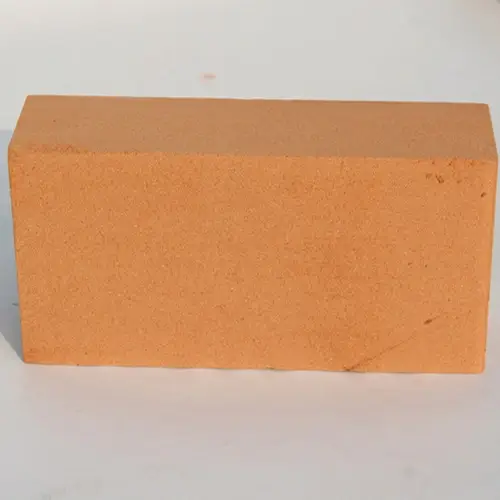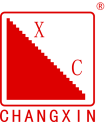Speaking of refractory bricks, for those who are not familiar with the refractory industry, think that refractory bricks are only square, but do not know that there are many kinds of refractory bricks. From the refractory brick material, the most commonly used refractory bricks are: clay bricks, high alumina bricks, lightweight clay bricks, lightweight high alumina bricks, mullite lightweight bricks, etc., the following is a careful introduction to these kinds of commonly used refractory bricks.
Clay Brick
Clay brick is made of clay clinker as aggregate and refractory clay (soft clay or semi-soft clay) as binding agent to produce refractory materials with Al2O content of 30%~48%. It is a kind of refractory products with a wide range of uses and outputs.
The nature of clay products fluctuates in a wide range, which is due to the chemical composition of the products and production process differences. Clay products generally have the following properties:
(1) Chemical and mineral composition: Al2O3 content of 30% ~ 48%, SiO2 content of 50% ~ 65% and a small amount of alkali metals, alkaline earth metal oxides TiO2, Fe2O3 and so on. Mineral composition is generally: mullite, quartz and quartz, glass phase.
(2) The refractoriness is generally 1580~1750C, which increases with the increase of Al2O3/SiO2, and the refractoriness of the products decreases significantly when the content of low-melting impurities is high.
(3) The load softening temperature is about 1250~1450C, which has a wide range of variation. The beginning of the deformation temperature is low, and 40% of the deformation temperature difference of about 200 ~ 250C.
(4) Low coefficient of linear expansion and low thermal conductivity.
(5) Good resistance to thermal shock and wide range of fluctuation. 1100C water cooling cycle is generally greater than 10 times. This is related to the lower coefficient of linear expansion of clay-based products, the insignificant effect of crystalline transformation, and plasticity at high temperatures.
(6) Resistance to chemical erosion: because of its weak acidity, has a strong resistance to acidic slag erosion, weak resistance to alkaline material erosion.
Clay products belong to the acidic refractory products, with the increase of SiO2 content and acidic enhancement. It has a certain anti-erosion ability to acidic slag, while the resistance to alkaline slag erosion is poor, so clay products should be used as the lining of acidic kilns. It is also used in high temperature kilns such as blast furnace, hot air furnace, glass kiln and carbon roaster.
High aluminum brick
The production process of high aluminum products is similar to the production process of multi-clinker clay products. The production process should be determined according to the actual production of specific situations, raw material characteristics, product requirements and production conditions and other factors. Take the clinker block before crushing for strict grading, granular material grading and storage and iron removal, clinker and combining clay mixed fine grinding and so on.
The characteristics of high aluminum products are as follows:
(1) Load softening temperature. Ordinary high alumina refractory products of the load softening temperature is generally 1420 ~ 1550C or more, higher than clay refractory products, and with the increase in the content of Al2O3 and improve. When Al2O3 <70%, the load softening temperature with the increase in the number of mullite phase and glass phase than the increase in the number and nature of the liquid phase on the load softening temperature has a significant impact, so reduce the impurity content of raw materials, is conducive to improving the load softening temperature and high temperature creep; when Al2O3> 70%, with the increase in the content of Al2O3, the load softening temperature increase is not significant.
(2) Thermal shock resistance. Ordinary high alumina refractory products thermal shock resistance depends mainly on the chemical mineral composition and microstructure. Generally worse than clay products.
(3) Chemical erosion resistance. Ordinary high-alumina refractory products resistant to acidic or alkaline slag, metal liquid erosion and oxidation, reduction reaction are better, and with the increase in Al2O3 content, harmful impurities and enhance the reduction.
High-alumina products are generally used in blast furnaces, hot blast furnaces, electric furnaces and other industrial furnaces.
High alumina brick physical and chemical indicators are divided into LZ-80, LZ-75, LZ-65, LZ-55, LZ-48, several grades.

Lightweight clay bricks
Lightweight high alumina bricks generally refers to a variety of lightweight refractory products containing more than 45% AlO3. Usually divided into two categories: one is a natural high alumina bauxite clinker as raw material for the manufacture of ordinary lightweight high alumina bricks; the other is to electrically fused or sintered alumina as raw material for the manufacture of lightweight high alumina products, because of its main crystalline phase for corundum, also known as lightweight corundum bricks.
Lightweight high alumina bricks are generally produced by the foam method, clinker grinding and combining agent (such as clay) and foaming agent mixed with the preparation of slurry, casting molding, firing at 1350 ~ 1500C. General lightweight high alumina brick bulk density of 0.4 ~ 1.35 g/cm3, porosity of 66% ~ 73%, compressive strength of 1.3 ~ 8.1MPa, thermal conductivity of 0.291 ~ 0.582 W / (m + K) (350C). Lightweight high alumina bricks have high refractoriness and good thermal shock resistance, and are commonly used as high temperature insulation layer in kilns. Lightweight high alumina brick can be used for direct contact with the flame kiln lining, but should not be used for direct erosion of the slag occasions. Because of the lightweight high alumina brick in the reducing atmosphere of good chemical stability, and therefore hydrogen, carbon monoxide and other gases for the protective atmosphere of the kiln, are generally used light high alumina brick for thermal insulation lining. Lightweight high alumina bricks are used at temperatures of 1350~1500 C, and high purity products can be used at temperatures of 1650~1800 C. China’s standards are divided into several grades of lightweight high alumina bricks according to their bulk densities, such as LG-1.0, LG-0.9, LG-0.8, LG-0.7, LG-0.6, etc. The lightweight high alumina bricks are also used as heat insulating linings in kilns with hydrogen and carbon oxides as protective atmospheres.
Mullite lightweight brick
Mullite lightweight brick is a new type of heat-insulating refractory containing Al2O250% ~ 85%, with mullite (3Al2O3. 2SiO2) as the main crystalline phase and binding phase. Because of the excellent high temperature mechanical properties and chemical stability of mullite, mullite lightweight bricks have high structural strength at high temperatures, low creep rate at high temperatures, small coefficient of thermal expansion, strong resistance to chemical erosion and good thermal shock resistance and other benign properties, can be used as a direct contact with the flame of the kiln working surface lining, which can significantly improve the energy-saving effect of the kiln. The use temperature of mullite-based lightweight bricks ranges from 1350C to 1700C, depending on the alumina content and bulk density of the products.
These are commonly used types of refractory bricks, refractory bricks should first determine its use of the environment, different use of the environment, the performance of refractory bricks and indicators may vary.
